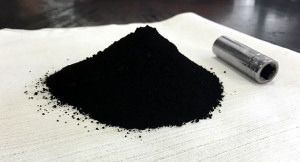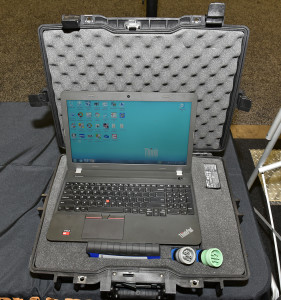 Do you have a favorite mechanic in your hometown that does the majority of the work on your truck but he is NOT able to tune your ECM, program the ECM or diagnose problems via the ECM? Pittsburgh Power can now help you and your mechanic. We have briefcases equipped with all the necessary equipment for him to plug into the data port on your truck and then give us a call – we will be able to remotely enter the ECM and help you and him to repair, tune, increase horsepower or torque, or change any of the parameters you so desire. We WILL NOT do any deletes of emissions equipment, but we can diagnose any emissions-related problems, increase your truck’s horsepower and torque, and instruct your mechanic on how to repair any faulty equipment. If the “Check Engine” light is coming on, we will help your mechanic (or you) as to the proper way to repair the problem that is triggering the fault code.
Do you have a favorite mechanic in your hometown that does the majority of the work on your truck but he is NOT able to tune your ECM, program the ECM or diagnose problems via the ECM? Pittsburgh Power can now help you and your mechanic. We have briefcases equipped with all the necessary equipment for him to plug into the data port on your truck and then give us a call – we will be able to remotely enter the ECM and help you and him to repair, tune, increase horsepower or torque, or change any of the parameters you so desire. We WILL NOT do any deletes of emissions equipment, but we can diagnose any emissions-related problems, increase your truck’s horsepower and torque, and instruct your mechanic on how to repair any faulty equipment. If the “Check Engine” light is coming on, we will help your mechanic (or you) as to the proper way to repair the problem that is triggering the fault code.
We are making this service available because so many of our clients do not travel to the northeast, where we are located. For some reason, many owner-operators just want to stay on the I-5 out west or in the state of Texas! But now, our electrical engineers can share their knowledge with our clients, regardless of where they live and/or operate. All that is needed is the briefcase (see photo), along with the necessary equipment and a telephone. Call us today for more details!
In the beginning, I did not like the variable geometry turbos on the DD3 and DD4 Detroits and some ISX Cummins engines because of their failure rate. I did, however, like the concept, and would love to have one on my 12-valve 1995 Dodge Cummins pickup – it’s just not possible, because that engine is not equipped with a computer. The failure rate of the variable geometry (VG) turbo was quite high on the early 2003 and newer diesel engines equipped with EGR. Most of the failures were caused by soot from the EGR system clogging up the vanes inside the turbo. Since the DD3 and most of the DD4 Detroits do not have EGR systems, there is no soot to lock the variable vane into one position, alleviating this issue.
We have installed several of the VG turbos and the results are amazing – out of a 12.7-liter engine, we were able to get 1800 ft. lbs. of torque, at 1200 rpm and 600 horsepower, without building excessive exhaust temperatures. The advantage of the VG turbocharger on the 12.7 Detroit is not only the fuel mileage increase, but the drivability of the engine, especially in cities, traffic and two-lane back roads, especially if there are hills involved and varying altitudes. There is always constant power, horsepower and torque under your right foot! As of this writing, we are installing a variable geometry turbocharger on an ISX. This is the first one, so I have no results to tell you now, but I will next month. Taking a product or engine that was prone to failures and making it work great is something we have been doing at Pittsburgh Power for the past 39 years.
 Does your truck run freely across the interstate? If you remove your right foot from the throttle, does it slow down drastically? When you look in your mirrors, do you see one side of your trailer and not the other? Many trailers trail to the right side of the highway, which is a telling sign that the axles of the trailer are not in line with the tractor. How can a tractor-trailer obtain great fuel mileage if it’s not running in the same line? It can’t! But this is just one thing that can cause your truck to not run freely. Some other factors may include restrictive mufflers, undersized turbochargers, restrictive exhaust manifolds, leaking charge-air coolers, loose clamps or hoses connecting the turbo to the charge-air-cooler, or a loose hose going to the air compressor from the intake manifold – these are ALL places where turbo boost can be lost. An engine is like a chain – it is only as strong as its weakest link. An engine’s air supply is the same, and those are ALL links in the chain.
Does your truck run freely across the interstate? If you remove your right foot from the throttle, does it slow down drastically? When you look in your mirrors, do you see one side of your trailer and not the other? Many trailers trail to the right side of the highway, which is a telling sign that the axles of the trailer are not in line with the tractor. How can a tractor-trailer obtain great fuel mileage if it’s not running in the same line? It can’t! But this is just one thing that can cause your truck to not run freely. Some other factors may include restrictive mufflers, undersized turbochargers, restrictive exhaust manifolds, leaking charge-air coolers, loose clamps or hoses connecting the turbo to the charge-air-cooler, or a loose hose going to the air compressor from the intake manifold – these are ALL places where turbo boost can be lost. An engine is like a chain – it is only as strong as its weakest link. An engine’s air supply is the same, and those are ALL links in the chain.
A free-running truck will be able to cruise along a level interstate at 2 to 8 psi of turbo boost – remember, the lower the boost, the better the fuel mileage. Your job as the driver and owner is to operate the truck in this manner and to install the necessary items on your truck to make this possible. The easier the truck cruises, the longer the engine will live and the better the fuel mileage will be. Installing 2:64 rear gears is one great way to help your truck run free. We have many parts in our inventory that can help you obtain a free-running rig, so why not take advantage of these things!
Most all EGR engines have an excessive buildup of soot in the air-intake manifold. Just look at one of the pictures in this article – this is a pile of soot that was removed from an ISX engine’s air-intake manifold with EGR and a DPF. Well, fear no more. As I have mentioned in previous articles, we now have a new cleaning process that will pressure-wash the inside of your engine. We also physically clean the air-intake manifold, the dosing valve, the EGR valve, and any other emissions-related items, so they will work as good as new – or better.
Please don’t ignore the emissions systems – it is much better to have us clean and maintain your system every 200,000 miles than to have a failure or a shut-down out on the road. Take care of your truck, and it will take care of you – for many years to come! Got questions or comments? Contact me at Pittsburgh Power in Saxonburg, PA by calling (724) 360-4080 or visit www.pittsburghpower.com today.
